15 Ways To Add More Flavor To Corn Chowder
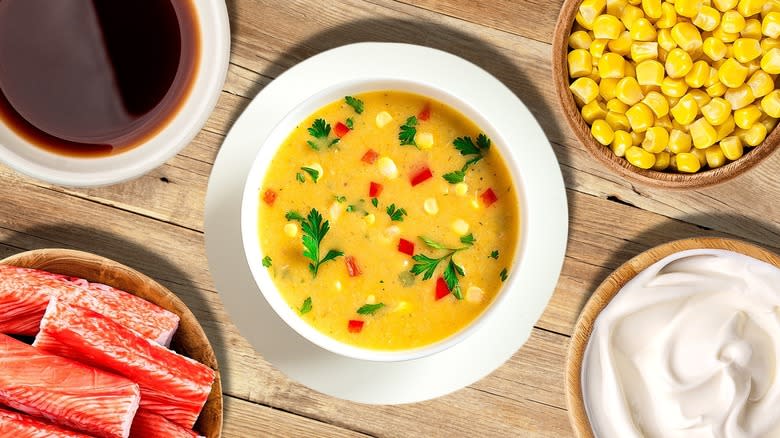
Corn chowder is a classic soup, thanks to its simplicity and delicious flavor. It also offers a tasty way to increase your intake of corn, which is packed with essential nutrients. Case in point: The vegetable is a rich source of fiber, a key compound for healthy digestion. It's also packed with antioxidants, which protect your cells from damage and reduce the risk of disease. Corn even contains some protein, vitamin C, and potassium.
Needless to say, there are plenty of reasons to eat more corn, and making chowder can make it happen. But if you're looking to upgrade your go-to corn chowder recipe, consider these easy tricks for boosting the flavor. Some tips call for specific preparation methods, while others involve adding unconventional ingredients. It's also possible to elevate the flavor throughout the entire cooking process, even after the corn chowder is done cooking. So, if you've already prepared a batch and think it needs an extra something, know not all hope is lost. With these methods in your back pocket, you'll have opportunities to enhance the dish until the moment it's ready to be served.
To store leftover corn chowder, keep it in the refrigerator in an airtight container. As with all cooked foods, corn chowder should be enjoyed within three to four days. Avoid freezing it, as the dairy will negatively affect the texture. However, with tips for making corn chowder taste even better, there's a good chance you won't have any leftovers at all.
Read more: 23 Types Of Potatoes And When To Use Them
Scrape Corn Cobs For Extra Flavor
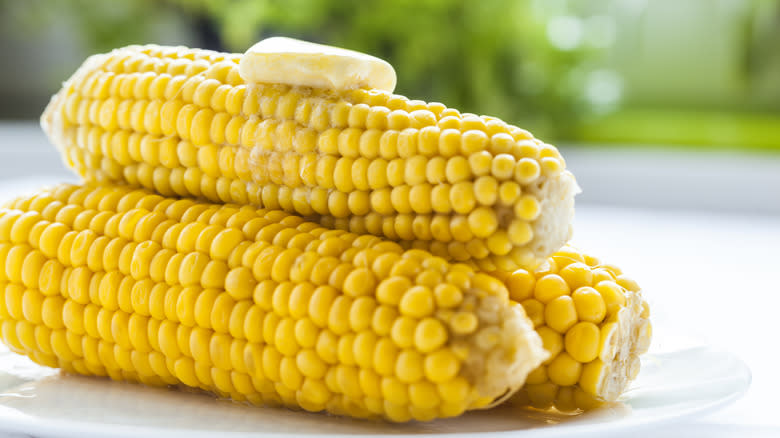
If you're using fresh corn to make chowder, don't be so quick to toss the cobs after removing the kernels. Take a minute to scrape the empty cobs, which will release the vegetable's natural pulp and juices — a liquid known as corn "milk." It's extra sweet and packed with flavor, making it the perfect ingredient for improving the taste of corn chowder. Plus, corn milk is rich in starches, which will naturally thicken soup when heated.
To extract corn milk, hold an empty cob over a bowl. With your other hand, use the back of a knife to scrape each side of the cob, moving up and down. This will release a yellow-white milky liquid, which will drip into the bowl. You'll get about 1 tablespoon of corn milk per ear of corn, though the exact amount will depend on the size of the cob. Once you've removed all of the corn milk, add it to the chowder as it cooks.
Simmer The Cobs
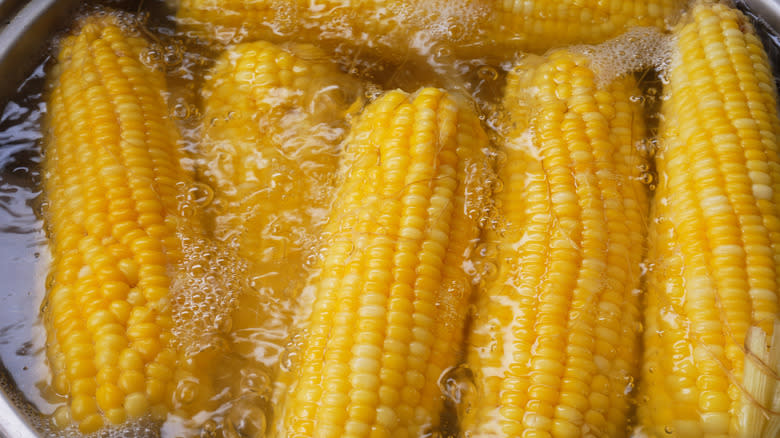
Believe it or not, empty cobs are still valuable even after you've removed the milk. Use them to make corn stock, also known as corn broth, which is essentially liquid infused with corn. Simply add the empty cobs to a pot of water or vegetable broth, then simmer for about 15 minutes. You can also cut the cobs into smaller pieces to release even more juices. The finished liquid can then be used in place of regular water or broth when making corn chowder, as well as other recipes that call for broth — think chilis, soups, and sauces.
If you don't want to simmer the cobs in a separate pot, feel free to place the empty ears directly in the pot of chowder. As it cooks, the stripped ears will release leftover juices, infusing the chowder with additional flavor. When the chowder is done cooking, remove the cobs from the pot and discard.
Puree The Corn
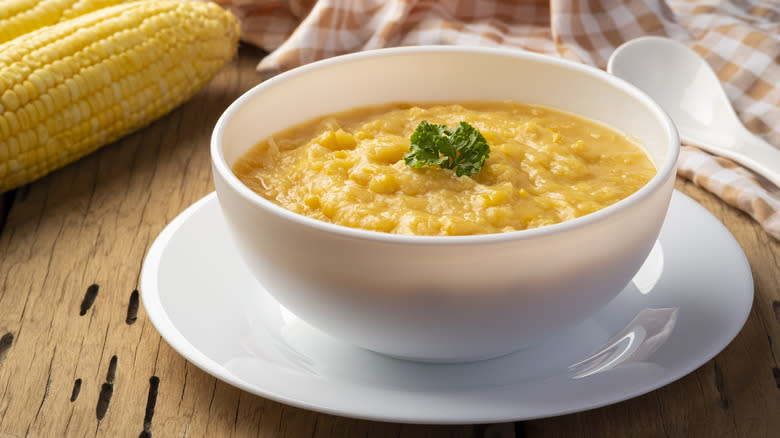
Whether you're using fresh or frozen corn, you'll want to puree some of the kernels before adding them to the chowder. It might seem like an unnecessary step, but the extra effort will significantly improve the quality of the soup. Pureeing will break down the kernels, allowing them to release more flavor and emphasize the corn notes of the soup. Additionally, corn kernels contain starches, which can naturally thicken liquids. The act of pureeing also releases these starches, giving the corn chowder a hearty and satisfying texture.
To puree corn, place half the kernels in a food processor or a blender with a splash of milk, broth, or water. The liquid will get the blades moving and give the puree a smooth consistency. Next, turn on the appliance to puree the corn kernels, pausing to scrape down the sides as needed. You can then add the pureed corn to the chowder, along with the whole kernels.
Use Bacon Grease
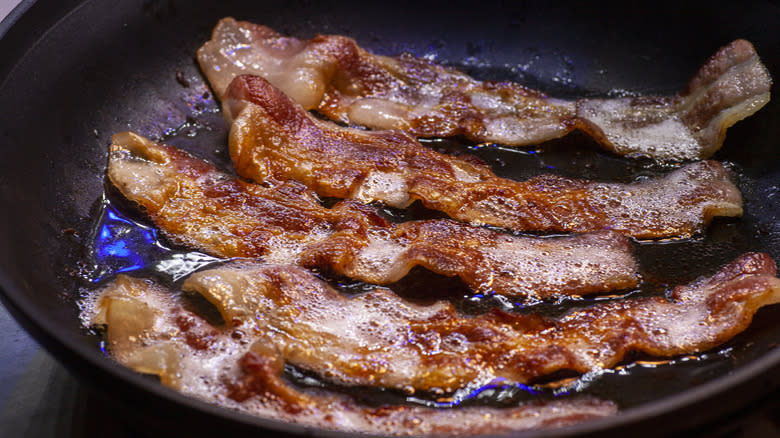
If your corn chowder recipe calls for bacon, put the grease to good use by incorporating it into the dish. It will add an extra layer of flavor that's equal parts smoky, salty, and savory. Start by cooking bacon in the pot that you plan to use for the corn chowder. Depending on how much bacon you'd like to cook, you may need to do this in batches to avoid overcrowding the pot. Once the bacon is fully cooked, remove it from the pot and leave the grease. You can then start making the recipe by cooking aromatics, such as onion and celery, in the bacon grease.
For a meat-free version, consider using butter or plant-based butter to cook the chowder ingredients. This will add extra richness and flavor to the soup. If you're craving that smoky taste of bacon, try seasoning your chowder with a generous helping of smoked paprika or smoked salt.
Add Sour Cream
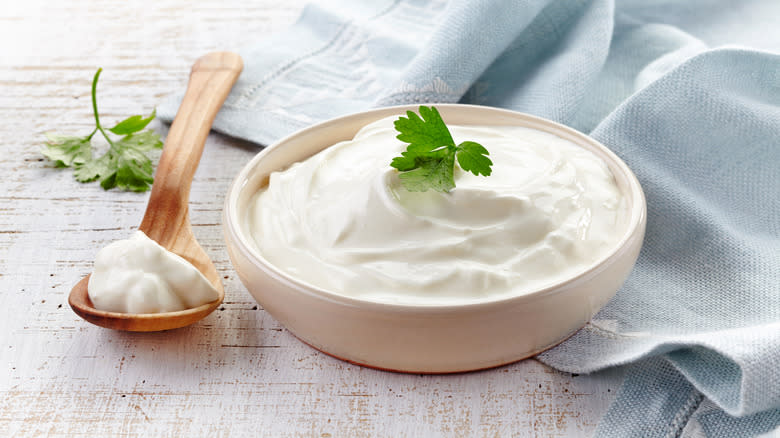
Upgrade your next batch of corn chowder with a dollop of sour cream. The ingredient is slightly acidic, delightfully milky, and extra rich, making it the perfect partner for sweetness of corn. It also doesn't hurt that sour cream has a thick texture, which will make corn chowder even more creamy and satisfying to eat.
If you don't have sour cream, other dairy products like Greek yogurt, heavy cream, and crème fraîche work too. Greek yogurt is especially useful if you're looking for a lighter alternative to sour cream. It contains less fat than sour cream, so it's less rich. Plus, it contains probiotics — or good bacteria that benefit the gut — which can amplify the nutritional content of your soup.
Whether you're using sour cream or another dairy product, always add it to the chowder at the end of the cooking process. If you mix it in during the simmering step, the dairy will curdle and create an unpleasant texture.
Try It With Coconut Milk
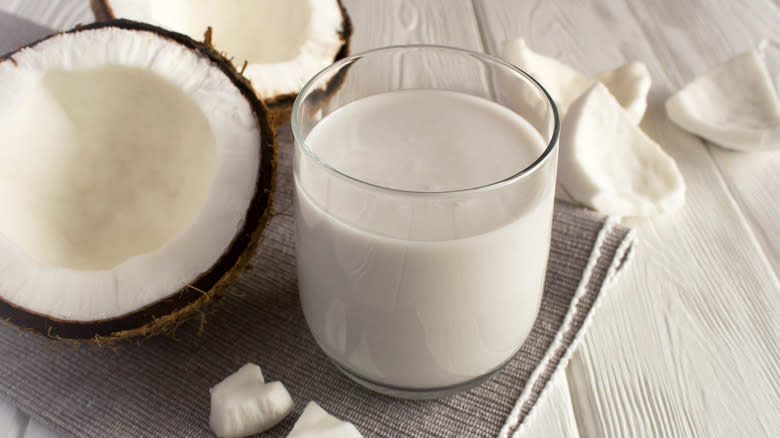
When it comes to enhancing the flavor of corn chowder, you're not limited to sour cream. Coconut milk is an excellent dairy-free cream alternative, as it's delicious and wonderfully thick. However, be sure to use coconut milk from the can and not the carton, as the latter will be too thin. You'll also want to skip light coconut milk and choose the full-fat kind for the best texture and consistency.
If you're concerned about the coconut flavor, note that canned coconut milk doesn't have an overwhelming taste. What's more, the sweetness of the corn will mask any coconut flavors, especially if you add corn milk and puree some of the kernels. Salt and plenty of spices will also tone down coconut milk, ensuring it provides richness without too much coconut flavor.
Note that coconut milk is not the same as coconut cream or sweetened condensed coconut milk, which are completely different products. Coconut cream is a thicker version of coconut fat, so its flavor is much stronger. Meanwhile, sweetened condensed coconut milk has been cooked and sweetened, making it better for desserts rather than corn chowder.
Season With Umami Ingredients
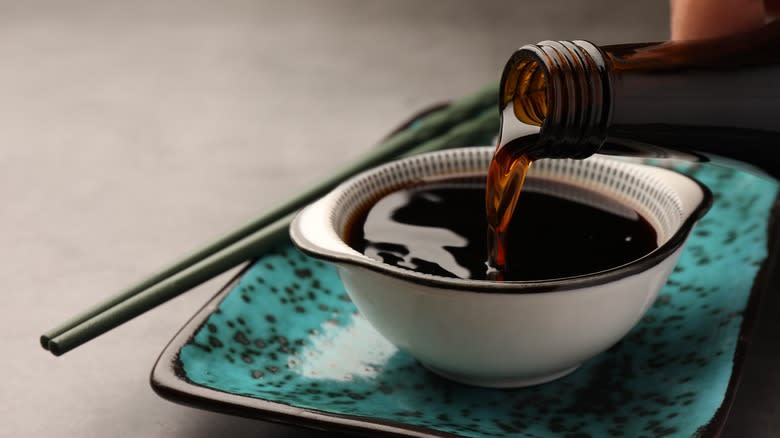
Almost every dish tastes better with umami ingredients, and corn chowder is no exception. Think soy sauce, miso, or even fish sauce. When mixed into corn chowder, the umami notes of these ingredients will add a tasty brightness, while enhancing the soup's depth of flavor. However, keep in mind that a little goes a long way, so avoid using too much in your soup. It's also a good idea to incorporate soy sauce, miso, or fish sauce at the end of the cooking process, as prolonged heat will burn off some of the flavor.
If you'd like to infuse your corn chowder with new textures, consider mushrooms instead. Not only does the ingredient boast an umami flavor, but it's somewhat meaty too. Try sautéing sliced mushrooms in a separate pan, then mixing it into finished corn chowder or serving it on top. Another option is to add a generous dash of mushroom powder, sometimes labeled "umami seasoning," to your corn chowder.
Mix In Liquid Smoke
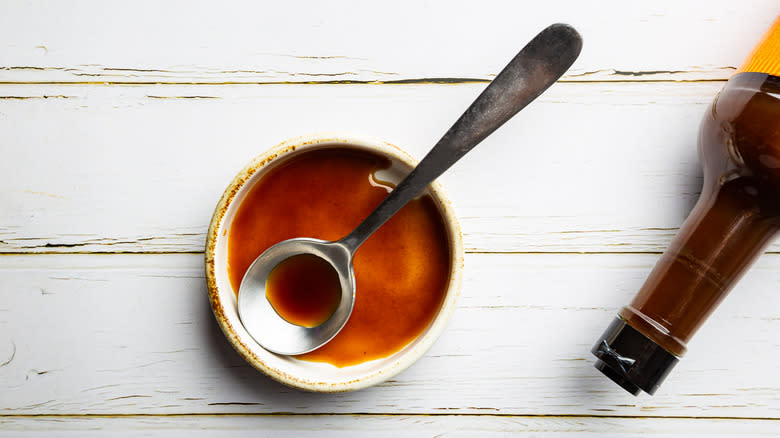
Many corn chowder recipes call for smoked paprika, a spice made of dried and smoked peppers. The deep, woodsy flavors of the spice offer a delightful balance to the sweetness of corn. However, if you want to amplify the smoky flavor of corn chowder even more, add a bit of liquid smoke to the dish. The ingredient is made of condensed smoke released from burning wood, and it might very well be your secret to a mouth-watering batch of corn chowder.
Plus, liquid smoke contains no animal ingredients, so it's useful for enhancing corn chowder sans bacon. You can typically find it near the barbecue sauce at the grocery store. There are also different types of liquid smoke, including hickory, mesquite, and applewood, so don't be afraid to experiment. Regardless of the kind you choose, only use a small amount, as liquid smoke is highly potent. About ½ to 1 teaspoon should be enough for a batch of corn chowder.
Try It With Seafood
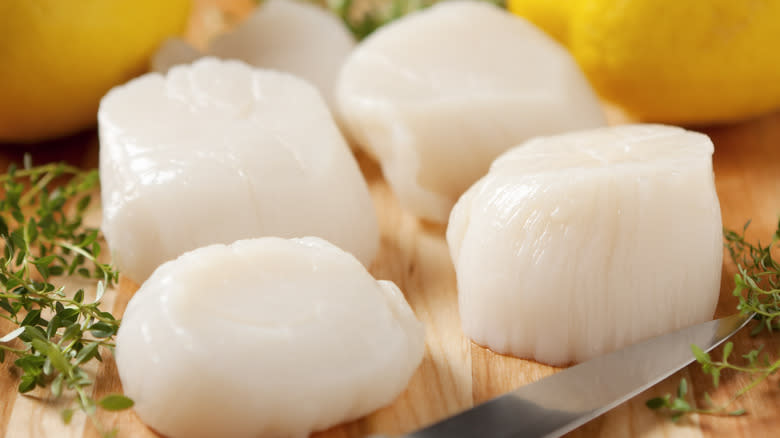
Seafood and chowder go hand in hand, so it only makes sense to serve corn chowder with your favorite fish or shellfish. Not only will the addition elevate the flavor of the soup, but it will also provide lean protein, making the chowder more filling and satisfying. Serve the dish with your favorite crusty bread and you've got yourself a complete meal.
If you prefer fish, choose a variety with a firm texture; this will ensure it doesn't fall apart in the soup. Tasty options include cod, pollack, or ocean perch. If you prefer seafood, go for chunks of crab meat, peeled shrimp, clams, or scallops. For a crab and corn chowder soup, feel free to use canned or fresh crab meat, depending on what you can find.
To amplify the briny seafood flavor even more, add clam juice to the soup. It's a standard ingredient in New England clam chowder, so why not incorporate it in the corn version? Bottled clam juice works great, but if you're already adding canned clams to the dish, you can just use the juices from that.
Toss In Chicken
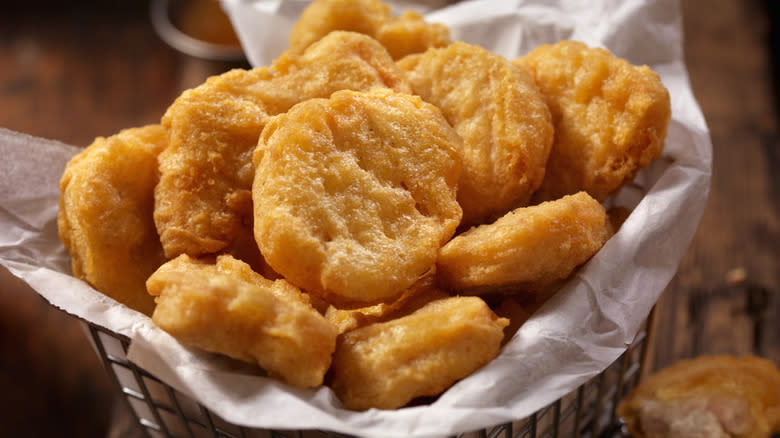
Make good use of shredded rotisserie chicken by stirring it into corn chowder. It will make the dish more filling, hearty, and all-around delicious. Avoid adding it too early on in the cooking process, as the prolonged simmering may dry out the chicken. Instead, mix it into the finished corn chowder just before serving, or use it as a garnish. Other delicious and convenient options include chopped breaded chicken cutlets, canned chicken, or even diced frozen chicken nuggets.
If you have time to spare, you're welcome to cook the chicken yourself as well. To make chicken corn chowder from scratch, start by cooking the bacon as usual. After you've removed the bacon from the pot, add the onions and celery, followed by chunks of raw chicken breast. Heat everything until the exterior of the chicken is cooked, then add the liquids and simmer accordingly.
Brighten With Lemon Juice
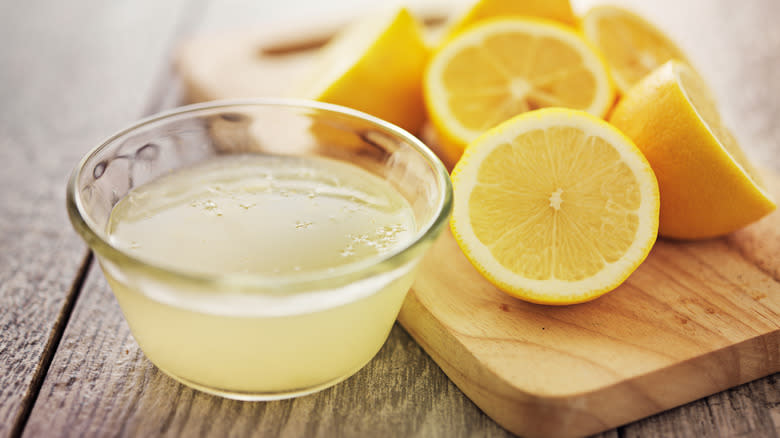
Give corn chowder a summery touch with a splash of lemon juice. The acidity will brighten up the dish, making it even tastier. For the best flavor, use freshly squeezed lemon juice, though the bottled stuff will do in a pinch. You can also add some lemon zest to elevate the sunny notes of the soup. No fresh lemons on hand? Use a bit of lime juice, apple cider vinegar, white vinegar, or rice vinegar. Each of these ingredients will provide a delicious tang, while balancing the sweetness of corn.
As with all potent ingredients, lemon juice and other acids should be used mindfully in soup. About 1 teaspoon should do the trick, but if it's your first time making a specific corn chowder recipe, it's best to start with half a teaspoon. Taste the chowder, then add more acidity as needed. The goal is to brighten the flavor of the soup, so the acidic taste shouldn't take the lead.
Spice It Up With Chipotle Peppers
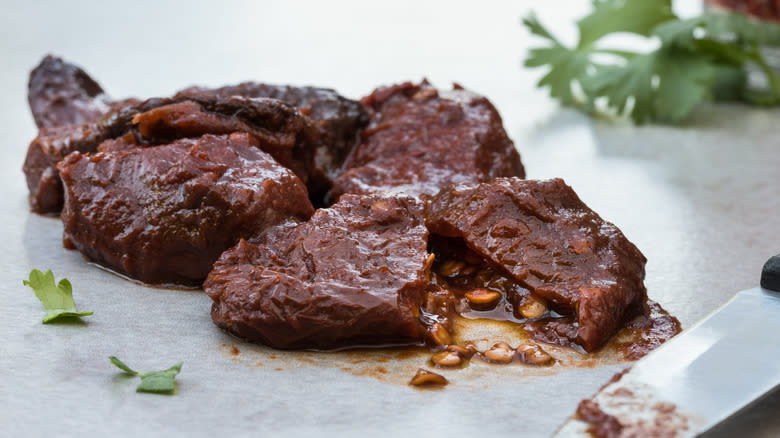
For another smoky corn chowder addition, turn to canned chipotle peppers. They're made of jalapeños that have been smoked, rehydrated, cooked, then canned in an adobo sauce. If you're unfamiliar with adobo sauce, it's a thick and spicy chile-based sauce typically made of vinegar, garlic, dried herbs, spices, and sugar. The adobo sauce used for canned chile peppers will often include tomato paste or sauce as well.
To use chipotle peppers in corn chowder, you'll only need a few pieces. Simply chop the peppers into smaller pieces, then add them to the pot after the aromatic base ingredients (think onions and celery) are just about cooked. You can also mix in a bit of the adobo sauce to emphasize the smoky pepper flavor. From there, you can continue incorporating the other ingredients, such as potatoes and broth. Additionally, should you decide to use canned chipotle peppers to flavor corn chowder, consider skipping the liquid smoke to avoid an overly smoky soup.
Incorporate Cheese
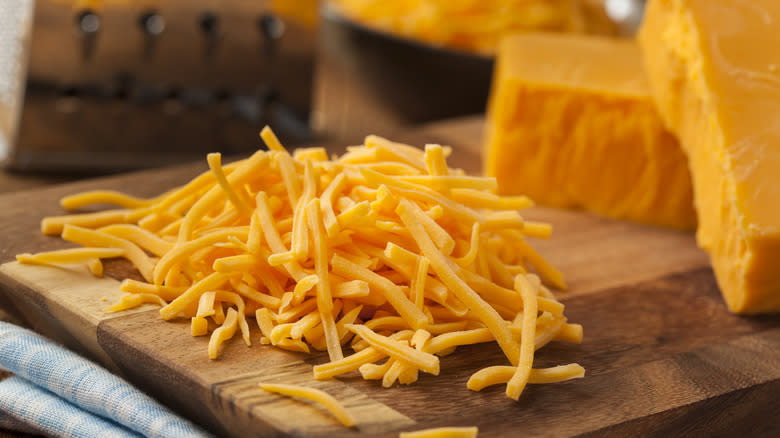
A handful of cheese is all you need to upgrade your next pot of corn chowder. Cheddar cheese is a classic choice, as it's often used in creamy soups like broccoli and cheddar soup. However, you can use any cheese with a good meltability, such as fontina or Monterey Jack. Smoked gouda is another excellent choice, as it will add a level of smokiness that pairs so well with corn, potatoes, and bacon.
When adding cheese to corn chowder, always use a shredded form or cut it into small cubes first. This will ensure the cheese melts quickly and evenly disperses throughout the soup. Also, avoid incorporating the cheese before it's time to simmer the soup, as this will increase the risk of curdling and clumping. Instead, mix in the cheese after the chowder is done cooking, but while it's still hot. Stir the soup a few times until the cheese is fully melted.
Substitute With Sweet Potatoes
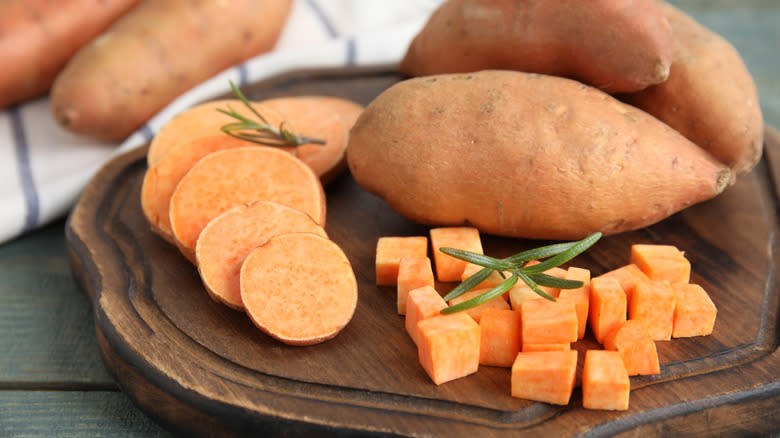
A standard corn chowder recipe calls for white or red potatoes. But if you find these options to be a bit bland, go for sweet potatoes instead. They'll provide a deeper flavor compared to their white or red counterparts. Alternatively, if you prefer the taste of roasted sweet potatoes, you can cook them in the oven first before placing them in the chowder. The trick is to add roasted potatoes later in the cooking process, as they'll mainly be cooked in the oven, rather than in the pot.
Regardless of your method, know that the peel of sweet potatoes is edible, so you can leave it on if you'd like. In fact, it's a rich source of fiber, so it'll boost the nutritional content of your dish. Also, do your best to chop the potatoes into even-sized cubes — this will ensure the potatoes cook and soften at the same rate. If some pieces are bigger than others, they'll take longer to cook, leaving you with undercooked potatoes.
Add Different Spices
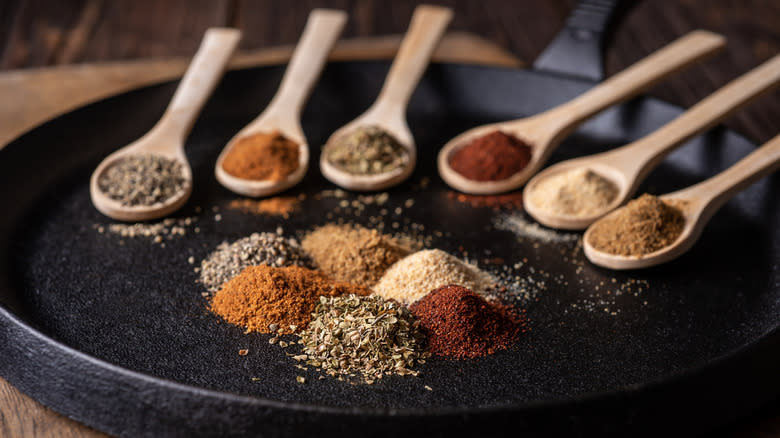
Conventionally, corn chowder calls for seasonings and spices like salt, black pepper, celery salt, and smoked paprika. But if you want to give your homemade chowder a twist, consider incorporating spices that aren't typically used in the dish. Turmeric is a great place to start, as its earthy flavor will complement the sweetness of the corn. As a bonus, the spice will brighten the yellow color of the chowder, making it look bright and sunny.
Other non-traditional spices that work well in corn chowder include chili powder, celery seeds, curry powder, dill, oregano, and red pepper flakes. You can also use spice blends, such as everything bagel spice or za'atar, a Middle Eastern mixture typically made of toasted sesame seeds, sumac, salt, dried thyme, dried marjoram, and dried oregano. For a savory kick of heat, go for jerk seasoning, a Scotch bonnet pepper blend traditionally used in Jamaican and Caribbean dishes.
Read the original article on Tasting Table


